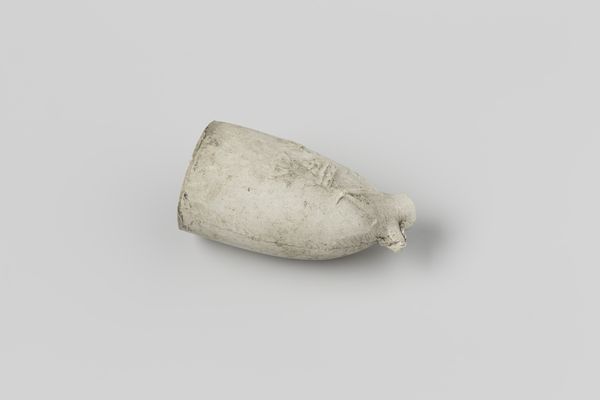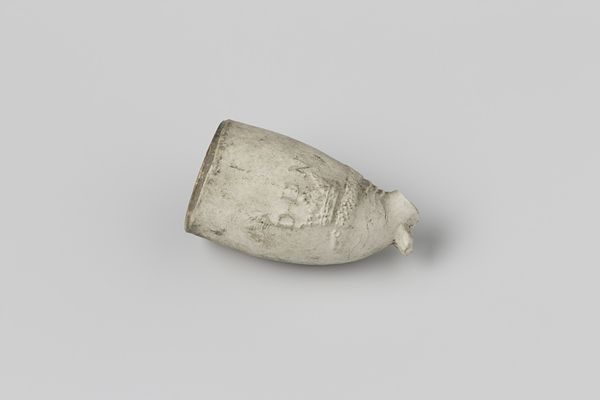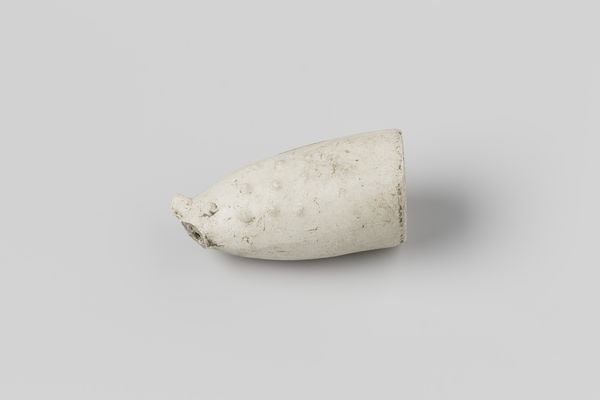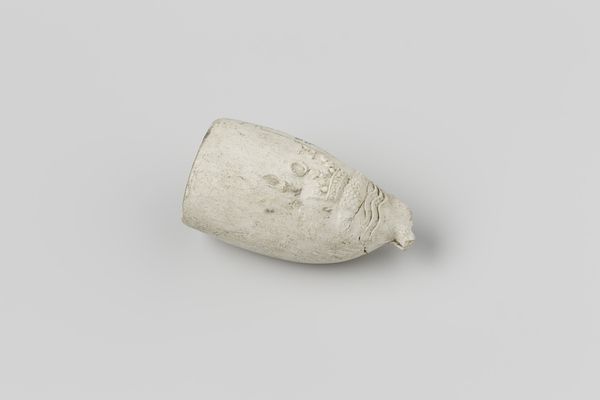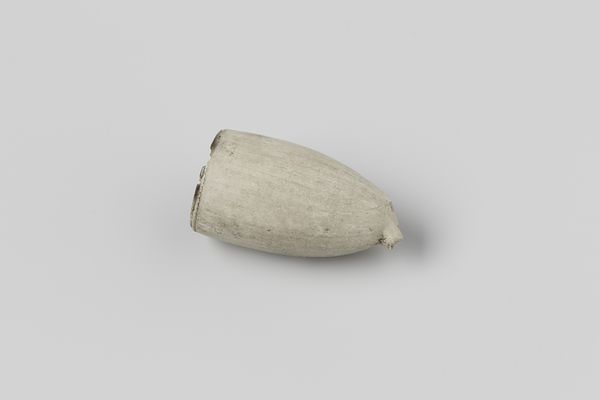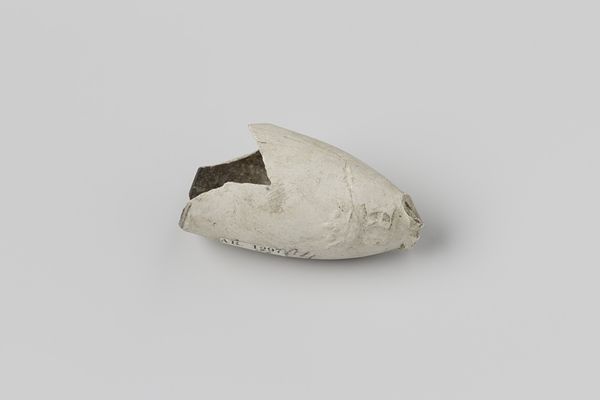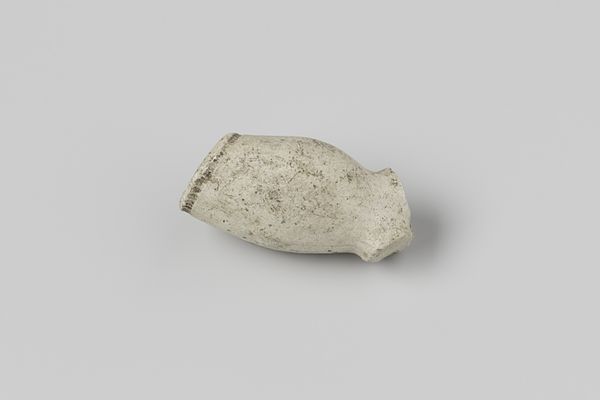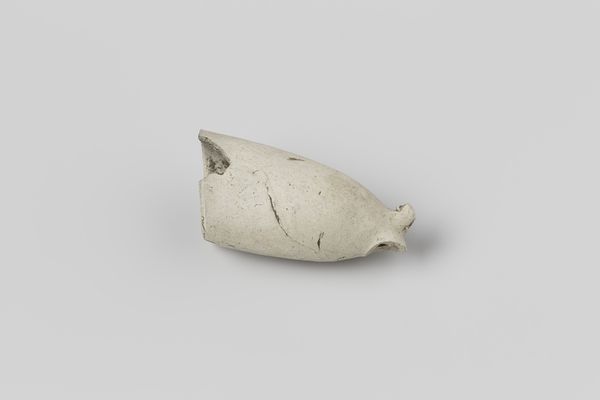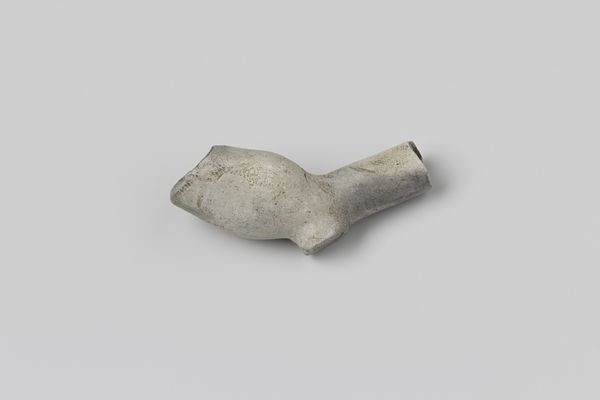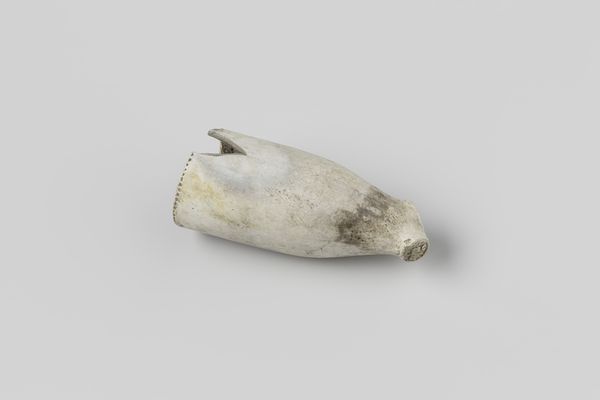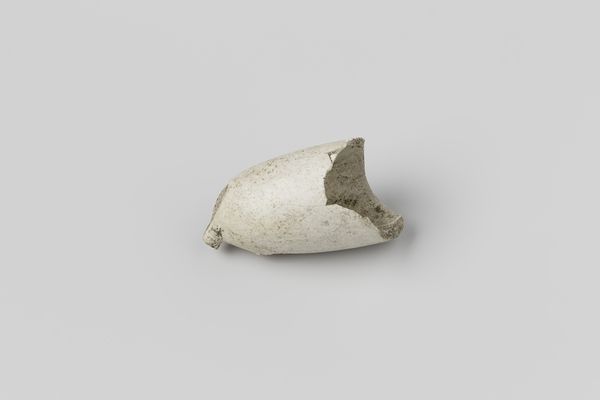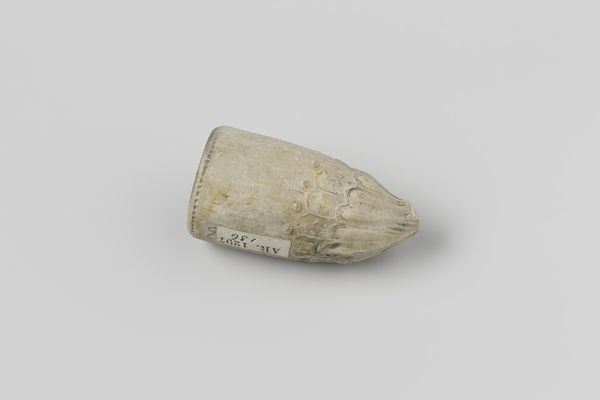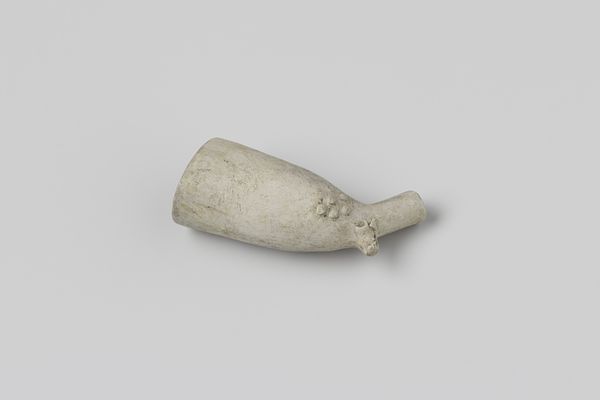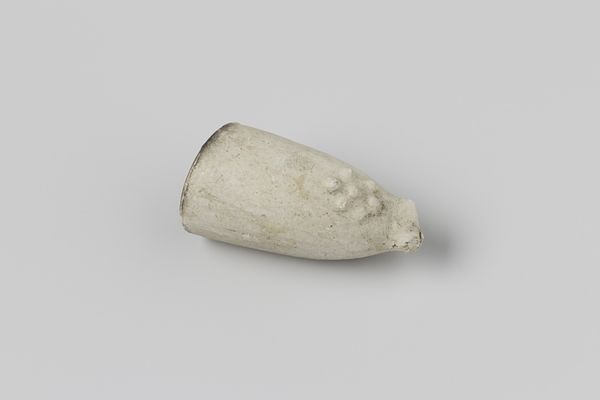
Dimensions: length 4.6 cm, width 2.1 cm
Copyright: Rijks Museum: Open Domain
Editor: This is an earthenware fragment of a baroque pipe bowl, dating back to sometime between 1750 and 1780. I'm struck by how simple it is, yet the remnants of decoration hint at a more elaborate whole. What draws your eye to this fragment? Curator: Note how the bulbous form is contained by implied lines, the subtle relief creating pockets of light and shadow across the object. This interplay manipulates the viewer's perception of depth on what is, essentially, a small, contained surface. Observe the material, earthenware, typically associated with more utilitarian objects. What purpose might this have served in the context of 18th century society? Editor: I hadn't considered the contrast between the refined lines and the common material. Was the appeal purely aesthetic? Curator: Aesthetics play a key role. Baroque art favored elaborate details. Consider this object's semiotic weight – what statements were being made by crafting something mundane from such detail and care? Editor: So it is elevated because of the form despite the base material used? Curator: Precisely. By focusing solely on form and material, we gain a nuanced appreciation that transcends mere historical context. What does it say to you now, without concern for context? Editor: That even in a fragment, the artist's intention still conveys a message about artistry. Curator: A successful piece speaks through its structure, irrespective of origin. Editor: Thank you, this approach reframes my appreciation of objects such as these!
Comments
No comments
Be the first to comment and join the conversation on the ultimate creative platform.
